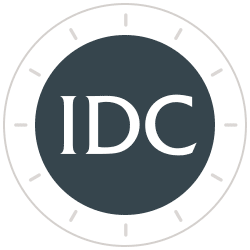Identifying Banks That Issue Brokered CDs
Many banks are looking for alternatives to raising rates or using advances from the Federal Home Loan Bank to attract new deposits. Banks with strong loan growth may raise funds and generate liquidity through issuing federally insured certificates of deposit (CDs). A large number of banks utilize the brokered CD market to satisfy their funding requirements. The recent economic crisis tested banks and credit unions, their deposit insurance, and their ability to protect household savings. Financial regulators reacted to the extraordinary circumstances of the crisis by expanding the coverage offered in existing deposit insurance arrangements. Deposits (including CDs) are currently insured to $250,000.
Using IDC Financial Publishing, Inc.’s (IDC) deposit database could help identify which banks might be good prospects for issuing brokered CDs. Sorting the quarterly data provided can quickly show which banks are increasing time deposits and which banks are utilizing brokered deposits in their financial plan. IDC provides maturity information for time deposits to enable the user to determine which banks will be looking for funding and when. Another sort of the data by loan growth pinpoints institutions that are more open to alternative methods of funding.
As an example, since IDC knows the current banks with CUSIPs issuing brokered CDs along with their characteristics as to loan and deposit growth, sorting can identify those institutions with strong loan and deposit growth not on the CUSIP list.
Sweep Accounts Included in Brokered Deposits
Sweep accounts are, in some cases, bank accounts used to transfer funds by a brokerage or money manager, in which available cash is automatically and regularly transferred into an investment that bears interest, normally into money market deposit accounts.
IDC identified 10 institutions with $291 billion in brokered deposits (33% of all brokered deposits) with small time deposits, a likely indicator of sweep accounts. Federal regulators of banks do not separate sweep accounts from other brokered deposits.
Morgan Stanley Bank, NA, for example, had $112 billion in brokered deposits, up 11 billion in the past 12 months, but had no time deposits. Morgan Stanley Bank has a brokerage unit, Smith Barney & Co.
Using IDC’s data can yield findings such as these:
1. The top 5 banks in brokered deposits have a total of $329 billion in brokered deposits, 37% of total brokered deposits of $881 billion. Almost all 60 large banks with over $1 billion in brokered deposits are ranked “Superior” (over 200), or “Excellent” (165 to 200) by IDC Financial Publishing, Inc. These 60 large banks have $745 billion in brokered deposits representing 83% of all brokered deposits.
2. Brokered deposits are a small percentage of domestic deposits for all other asset size and quality categories.
3. Time deposits as a percent of domestic loans are smallest for the higher quality banks (ranked Superior or Excellent) with assets more than $5 billion. The percentage of time deposits to loans generally increases as each level of bank quality decreases. The lower the quality or rank of the bank, the greater the time deposit to loan percentage. Depositors require the safety of time deposits as the bank quality declines.
4. The deposit database also contains each banks time deposits by maturity which can be a valuable marketing tool. Subscribe now to remain fully informed on the growth by bank in brokered deposits, other deposits, and total loans.
IDC’s quarterly database also contains information on other types of deposits such as, savings, MMDA, and demand deposits. The user can sort the data to obtain information pertinent to their goals and objectives. The database, when used in conjunction with IDC’s rating system, could prove to be an invaluable tool in your bank research.
